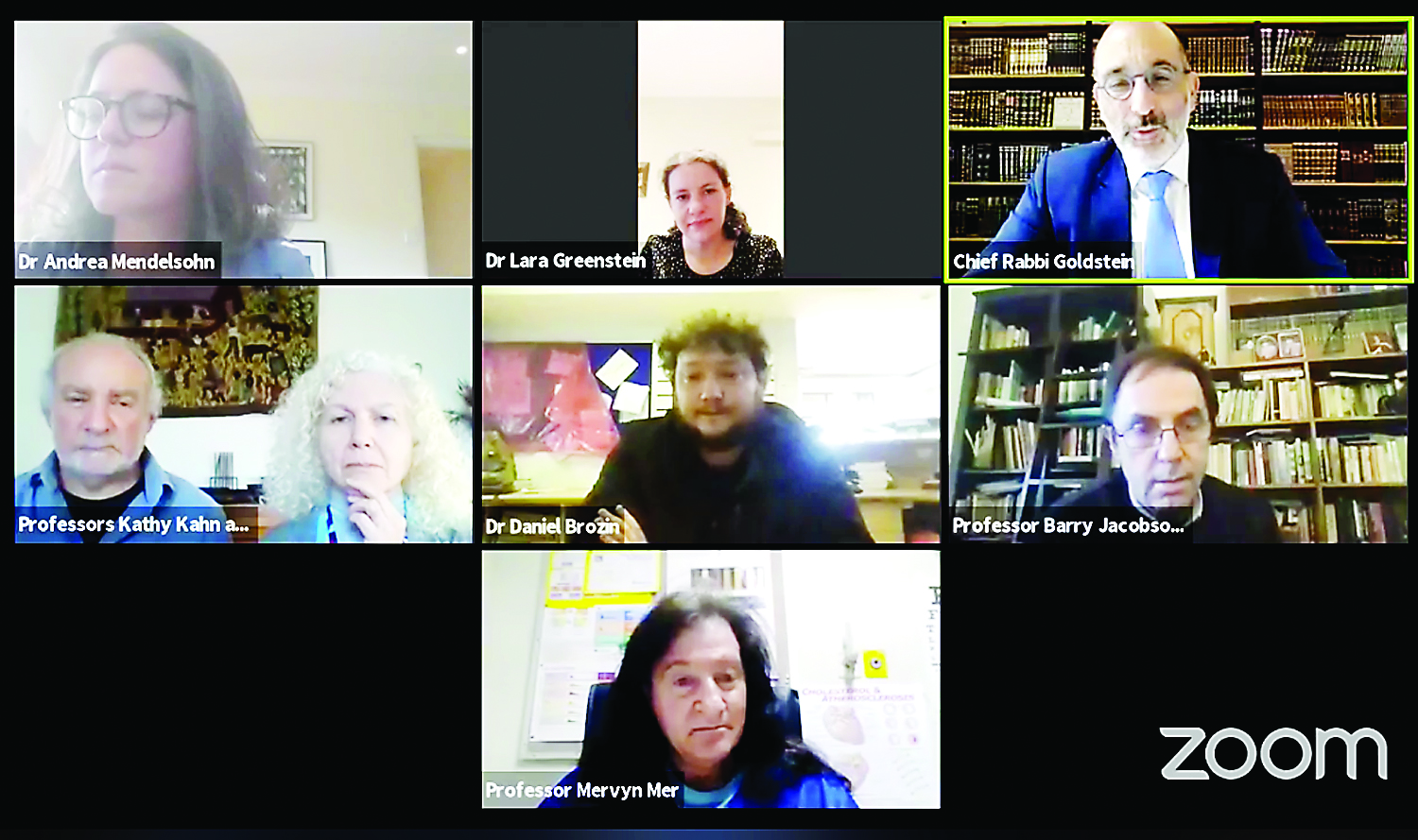
Featured Item

‘Like a military operation’, say doctors at state hospitals
Jewish doctors who are on the frontline of COVID-19 in the public sector are conveying a message of teamwork, innovation, and hope that goes against the prevalent sense of disarray in the sector.
Professor Mervyn Mer, the head of intensive care at Charlotte Maxeke Johannesburg Academic Hospital in Parktown, one of the major referral hospitals for the disease, has managed to double the size of the intensive care unit (ICU) at the hospital in six weeks, and his teams have created a level of care that will improve outcomes in the unit long after the virus has come under control.
Mer spoke about his work in a webinar on 2 August titled “On the frontline: in conversation with heroic doctors”, a tribute to health workers hosted by Chief Rabbi Dr Warren Goldstein.
The team at Charlotte Maxeke has engaged with partners to maximise facilities in under-resourced conditions, upskilled nurses, ensured sufficient equipment, and benefitted from the experience of international partners.
Mer chairs a global forum for the fight against COVID-19, which has assisted the teams’ therapeutic regimen. Part of its therapeutic armamentarium – the use of corticosteroids – has changed outcomes significantly and is so innovative, it has been documented internationally.
Contrary to the perception of lack of planning in the sector, Mer says the unit benefitted from months of planning and advances in respiration and intubation in other parts of the world.
“We started preparing in January, after hearing about COVID-19 in China,” he says, pointing out that there was always concern that critical care services in the country weren’t sufficient for the number of possible cases. To put it in perspective, Mer says that currently, South Africa has only 70-80 qualified ICU specialists (in a population of about 60 million), and of those, only roughly half are practicing.
However, mortality rates at Charlotte Maxeke are lower than in the first world. “Elsewhere, the mortality rates of patients on respirators has been greater than 80%. In South Africa, it’s far lower. Part of it relates to having a particular academic interest in Johannesburg on when to intervene, how to intervene, and how to maximise therapeutics.
“It also has to do with communication, interaction, fabulous teamwork, wonderful nursing, daily debriefing sessions, and being around all the time [Mer says he has been in the hospital every day and night since January].
“We currently have a packed ICU, with all patients ventilated, bar one. We are hoping to relieve the vast bulk of them from their ventilators soon,” Mer says.
Preparation and dedication have also assisted Chris Hani Baragwanath Hospital in Soweto, says Dr Daniel Brozin, an internal medical registrar working in the hospital’s COVID-19 ward.
“It’s been crazy, but it’s amazing how we prepared for this. We went from one ward and half an ICU to eight full wards and a full ICU. The team includes doctors from all sectors, including internal medicine, orthopaedics, and ENT. It’s like being in the military. We’ve banded together, and hit the virus running.”
“Hopefully, we’re on top of this now. It’s down to teamwork and the hospital’s tenacious and spirited leadership. COVID-19 has removed boundaries. Seniors are on the ground, doing grunt work. It’s shown what a leader is.”
“It’s an inspiring time,” says Dr Lara Greenstein, the head of a general medical unit at Helen Joseph Hospital in Auckland Park.
Greenstein says one of the reasons this hospital is working well is that “we are so used to working with limited resources. This wasn’t the case in other places in the world.”
Like the others, practice and planning were key. “Helen Joseph has very good leadership. The COVID team revamped the hospital. We went from an empty ward being renovated to a full COVID-19 ward. Before it hit, we did practice runs. When it hit, everyone played their part.”
“Being on the frontline, wearing protective gear, in the heat, sweating, and working relentless hours, the nurses – who carry on day in and day out – are the real heroes,” says Professor Barry Jacobson, the clinical head of the haemostasis and thrombosis unit of the department of haematology at Charlotte Maxeke.
Jacobson has also been on the forefront of innovation. Through his work in haematology and expertise in thrombosis, it became evident that patients with COVID-19 were getting microclots in their lungs. As a result, Jacobson started two trials treating patients with anticoagulants, one of which is ongoing, and is a world first.
Good organisation is critical to meeting the surge in patients in primary healthcare, says Dr Andrea Mendelsohn. Mendelsohn is a senior medical officer in a HIV/TB primary healthcare clinic in the Cape Flats. This year, she has spent much of her time managing COVID-19 patients presenting to the day hospital.
“We’ve had to reorganise the hospital to deal with a massive influx of patients,” she says.
That included reorganising into COVID and non-COVID sections, screening at the door, and delivering chronic medication to people’s homes. Forty percent of the doctors at the hospital shifted to the COVID side. Non-emergency treatment was put on hold.
“A month ago, things were looking frightening, with numbers going up,” Mendelsohn says. “It got to the point where five people would show up, and I had five oxygen ports, and that was it. But things have started to plateau. We’re starting to think of a ‘co-COVID’ world, where we have to manage COVID-19 and other emergencies.”
It’s an inspiring story of grit and teamwork in an under-resourced sector.










